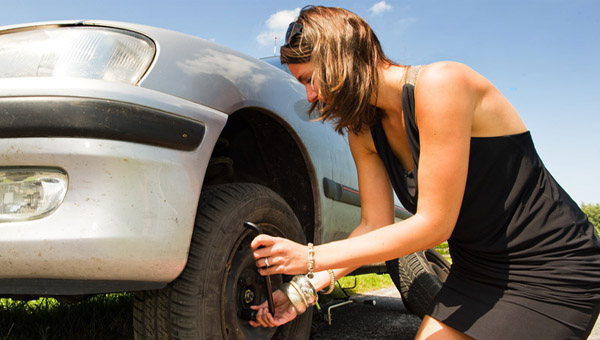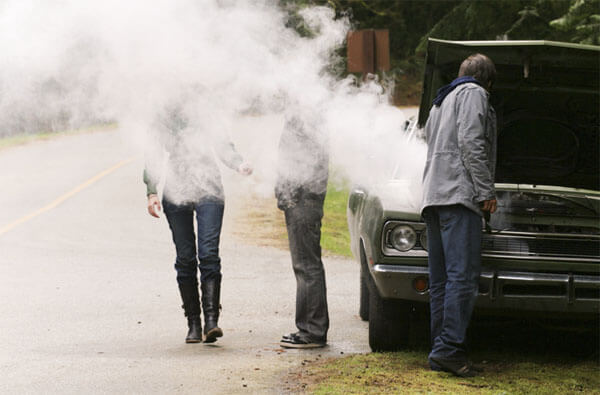
In this tutorial, we show you how to change a flat car tyre and replace it with the spare wheel. Some would say that changing a flat car tyre is one of the easiest pieces of maintenance you can perform on a vehicle. You take one tyre off and put another on. Pretty straightforward, right? Well, if you are at home on your driveway then yes, it can be a fairly simple task, however, if you are on the hard shoulder of the motorway during rush hour, then that simple task can seem like an impossibility!
Space saver wheels can only be driven within specific speeds
These days every car is produced with a spare tyre and wheel, some are full-sized and some are space-saver tyres, i.e. designed with the sole purpose of getting you home after a blowout or flat tyre. It is important to know which type of tyre you have in the boot since that will dictate how far you may travel on the spare when your regular tyre is damaged. A space-saver wheel can’t be driven at speeds in excess of 50 mph (80 kph) either since it is meant to be a temporary solution.
So, how do you change a spare tyre? It is as easy as 1-2-3!
Have your replacement tyre, wheel and tools at the ready
The first task is to retrieve your replacement spare wheel with a tyre from the boot of the car, along with the necessary tools you’ll need for the job. These include the following tools:
- wrench
- cap hook
- locking wheel bolt adapter
- vehicle jack
Use the cap hooks to pop the caps off the bolts on the tire. If you have a hubcap, use a screwdriver to pull it off.
Read more tips and tricks in our autos category
Unlock The Locking Bolt
Once you have the caps off, you can put the locking wheel bolt adapter onto the wrench, and then use that to unlock the locking bolt on the tyre (keep in mind that each locking bolt nut is custom to your wheels, so ensure you have them always in a secure place in your car) Once the locking bolt has been removed, loosen but do not remove the remaining bolts by pushing down in an anti-clockwise direction. The bolts may be tight, and pushing down will give you more power to remove them. At this point, you can jack up the car but make sure you put the jack under the car frame itself.
Remove the Bolts & Damaged Tyre
Now that the car is jacked up, you can remove the remaining bolts from the tyre. Put them somewhere that you won’t lose them, and not somewhere they are likely to roll away from. Once the bolts have been removed from the tyre, remove the tyre itself. Place it off to one side but not in a location where it may be dangerous to other traffic on the road.
Replace the Spare Tyre
Now it’s time for the spare tyre, replace in the same way you removed the damaged wheel, but make sure that the holes all line-up. Put the bolts on the tyre and tighten them by hand. However, do not tighten them completely just yet. You will want to lower the jack and bring the car back down to the ground. Once you have done this, you can then tighten all the bolts with as much strength as you can muster. The locking wheel bolt should be tightened last of all. All that is left is to put the bolt covers on by hand and put the damaged tyre in the boot.
How to check car tyre pressure
Being the victim of a blowout or flat tyre is never fun but it is not the end of the world, and now you are armed with the knowledge to easily remove and replace a tyre to get you not only back on the road, but back home safely too!
A few additional helpful tips:
- Turn on your hazard lights
- Always put the break on before replacing a tyre
- Never change a tyre on a hill, incline, soft verge or uneven ground
- Make sure all passengers are out of the car before changing the tyre
- Use your car handbook to help with placement of the jack
- Do not go under the car while it is raised up by the jack.
- Wear a reflective jacket – so other motorists can see you!
- Check the pressure of the replacement tyre
Remember to keep your tyres regularly maintained, check them often for damage, wear and tear, and make sure the tyres have the correct air pressure for your type of vehicle. If in doubt contact a trusted tyre dealer.








